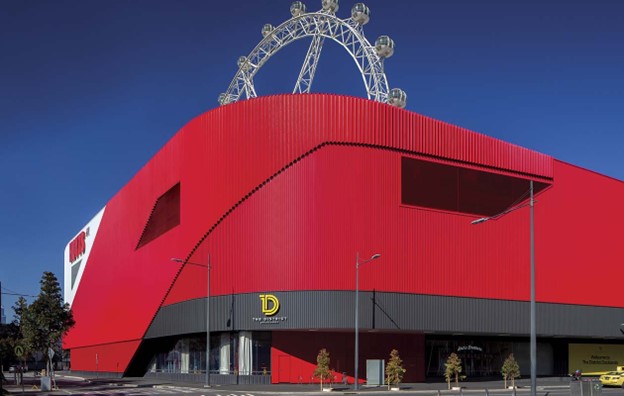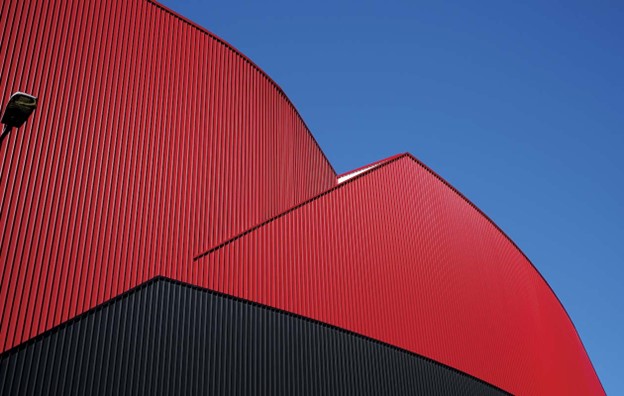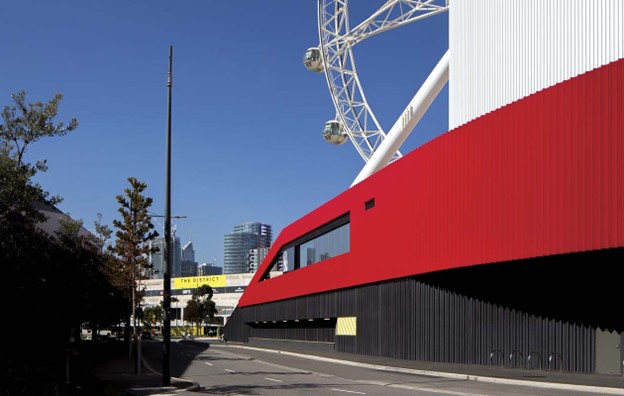07 Feb 2024
Behind the Facade: Delving into the World of Contemporary Architecture
Behind the Facade: Delving into the World of Contemporary Architecture
Share:
Behind the faces of modern buildings with awe-inspiring shapes, there lie wonders that showcase the beauty and sophistication of contemporary architecture. Far beyond the aesthetic façades, there are concepts that can change the way people perceive and interact with space, light, and materials.
Getting to Know Contemporary Architectural Styles
The term "contemporary" derives from the Latin language, comprising the elements "co," signifying together, and "tempo," referencing time. By virtue of its constituent definitions, contemporary architecture can be construed as an architectural paradigm that aligns with prevailing events or trends.
Contemporary architecture transcends temporal confines, thereby affording it the capacity to align with contemporaneous trends during the construction phase. From an aesthetic perspective, this architectural style presents a significantly broader spectrum, leveraging advanced technological resources and an array of modern building materials commensurate with its era.
Characteristics of Contemporary Architecture
Contemporary architecture style is essentially a collaboration of various other styles such as modern, minimalist, and natural. Here are the characteristics that define this architectural style:
1. Utilization of curved design

The Cinema Complex District Docklands at Hoyts Cinema Complex Docklands, Victoria, Australia utilizes COLORBOND®. It is an example of contemporary architecture. Designed by architect Nick Hubicki from NH Architecture.
Source: STEEL PROFILE®
In contemporary architecture, the use of curved designs becomes an inherent characteristic, showcasing uniqueness and dynamics that distinguish it from traditional architecture. The curved lines engraved offer a dynamic ambiance and present a distinct appearance from the commonly found straight-line arrangements.
The combination of more fluid line patterns with a blend of straight lines creates visual harmony. This establishes a fusion between experimental boldness and design stability, which is the essence of contemporary architecture.
2. Asymmetric room shapes

The Cinema Complex District Docklands at Hoyts Cinema Complex Docklands, Victoria, Australia utilizes COLORBOND®. It stands as an exemplary application of contemporary architecture. Designed by architect Nick Hubicki from NH Architecture.
Source: STEEL PROFILE®
The predominant use of curved lines creates unique and distinctive spaces. Creative experimentation in the form of asymmetric spaces is often applied, accompanied by minimal partitioning to provide a sense of openness in the room.
3. Large windows

The use of large windows in architectural design has become a trend that not only creates aesthetic visual impressions but also brings greater functional benefits. Such window arrangements optimize natural lighting and air circulation.
4. Neutral and bold colors
Neutral colors such as black, gray, and white are often applied in contemporary architecture. Certain elements are also accentuated using bold colors like yellow or orange to enhance the aesthetic impression.
5. Use of interesting materials
Modern materials such as glass, stone, metal, and wood are frequently the primary choices in contemporary architecture. Their utilization characterizes contemporary architecture, providing freedom in creating unique and characterful designs.
Achieve Architectural Masterpieces with COLORBOND® Technology
For an architect, every work represents a symbol of freedom of expression and everlasting pride. However, behind the radiating beauty lies the crucial foundation of material choice. In the quest for materials that are not only innovative but also instill a sense of pride, COLORBOND® colored steel emerges as an undeniable choice.
With over half a century of experience and technological testing, COLORBOND® is not just an option but a key component in achieving architectural masterpieces. Its excellence lies not only in its captivating aesthetics but also in its remarkable durability.
The use of COLORBOND® introduces a new dimension to realizing architectural designs that not only please the eye but also transcend boundaries of boldness. With its proven durability from decades of testing, this colored steel answers the need for unbeatable resilience in various climatic and environmental conditions.
COLORBOND® offers a variety of exotic colors, divided into two types: Standard and Matte Finish.
COLORBOND® in Contemporary Architectural Masterpieces
COLORBOND® steel has proven its crucial role in realizing stunning contemporary architectural projects. In various prestigious endeavors, COLORBOND® steel emerges as the answer to the need for materials that are not only aesthetic but also strong, durable, and reliable.
1. Summarecon Pedestrian Overpass (JPO Summarecon)

The Summarecon Pedestrian Overpass (JPO Summarecon) in Kelapa Dua, Tangerang Regency, Banten, utilizes COLORBOND®.
The Summarecon Pedestrian Overpass (JPO Summarecon) stands as a shining example of architectural excellence and the use of COLORBOND® steel. This pedestrian bridge serves as an icon between Summarecon Mall Serpong and the M-Town apartment complex. Its unique design, combining aesthetics with COLORBOND® steel technology, not only creates visual appeal but also ensures safety and comfort for JPO users.
For infrastructure applications, COLORBOND® XPD and COLORBOND® XRW are the suitable choices. COLORBOND® XPD offers a corrosion warranty of up to 15 years with a fade warranty of up to 5 years. Meanwhile, COLORBOND® XRW provides a warranty of up to 20 years with a fade warranty of up to 5 years.
The most crucial aspect in selecting COLORBOND® products is ensuring alignment with design requirements and location conditions. The strength and flexibility of COLORBOND® steel allow for the formation of desired design structures while ensuring weather resistance and long lifespan. The use of lights within the bridge structure creates a captivating lighting effect, making the JPO Summarecon a focal point at night.
2. The Lexus Pluit Gallery

The Lexus Pluit Gallery in Penjaringan, North Jakarta, utilizes COLORBOND®.
The Lexus Pluit Gallery, as an embodiment of luxury and excellence from a leading automotive brand, utilizes COLORBOND® steel for its futuristic and unique roof design. This material not only radiates visual beauty but also offers high durability.
Its resilience against extreme weather conditions such as heat, rain, and wind makes it an ideal choice to meet the high standards of safety and durability that are the main philosophy of Lexus.
The selected COLORBOND® product for the Lexus Pluit Gallery roof not only creates an elegant and modern impression but also aligns with the classy identity of the Lexus brand.
COLORBOND® steel, developed by BlueScope, offers premium durability with the ability to adapt to weather conditions and high flexibility for exterior use. Its application is suitable for luxurious roofs and walls, architectural panels, and building accessories requiring excellent color and gloss retention.
With all its advantages, COLORBOND® steel has proven its role not only as a construction material but also as an element that creates beauty, resilience, and identity in your projects. Projects like the JPO Summarecon and Lexus Pluit Gallery serve as real evidence of how safety, comfort, and aesthetics can be achieved in harmony through the right material choices.
For more COLORBOND® project inspirations, visit HERE!

